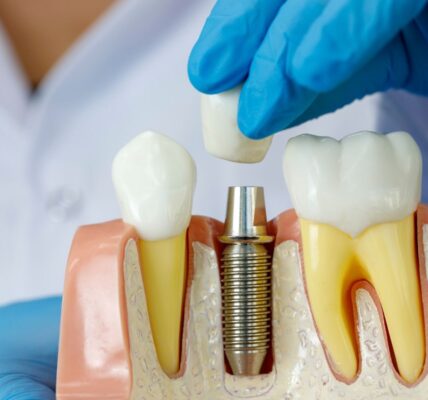Periodontal disease is a chronic infection of the soft and hard tissues supporting the teeth. It can lead to adverse oral consequences, leading to tooth loss. Thus, it is essential to know and understand the signs and symptoms of periodontal disease to detect the condition as soon as it develops and seek prompt treatment.
The dentist in Woodbridge, VA, and their team of skilled periodontists offer a comprehensive approach to periodontal disease with enhanced patient compliance. But first, let us explore the possible signs and symptoms that warn about the disease.
Warning signs and symptoms of periodontal disease
The symptoms of the disease are usually progressive with a typical slow onset. Thus, it is crucial to thoroughly evaluate your gum health during routine oral examinations. Periodontal disease can manifest with various signs and symptoms, ranging from mild to severe. Here are some common alarming indicators:
Gum inflammation (gingivitis) and swelling:
In the early stages, the gums may appear red, swollen, and tender. This inflammation is often a result of plaque buildup along the gumline.
Bleeding gums:
Gums that bleed during brushing, flossing, or even spontaneously can be a sign of gingivitis, which is the mildest form of gum disease.
Persistent bad breath (halitosis):
Bacteria in plaque and tartar buildup can produce foul-smelling gases, leading to chronic bad breath that persists despite oral hygiene efforts.
Receding gums:
As gum disease progresses, the gums may start to pull away from the teeth, leading to the exposure of tooth roots. This can make teeth appear longer and cause sensitivity.
Formation of deep pockets:
Pockets can form between the gums and teeth as gum tissue pulls away. These deep burrows can trap food particles and bacteria, contributing to further infection and bone loss.
Loose or mobile teeth:
Advanced periodontal disease can result in the loss of the supporting bone structure around the teeth, leading to loosening or shifting of teeth.
Changes in bite or alignment:
As teeth shift or become loose due to bone loss, changes in the bite pattern or malocclusion may occur.
Pus around the teeth and gums:
In severe cases, pus may develop around the teeth and gums due to abscess formation, indicating an active infection.
Pain or discomfort:
Periodontal disease can cause pain or discomfort, especially when chewing or applying pressure to the affected area.
Tooth loss:
Ultimately, untreated periodontal disease can lead to tooth loss as the supporting structures of the teeth deteriorate.
Summary
Regular dental check-ups are important for detecting and treating periodontal disease in its early stages, as well as for preventing disease progression. If you notice any of the above-mentioned signs or symptoms, it’s essential to consult with a dentist for proper evaluation and treatment.











